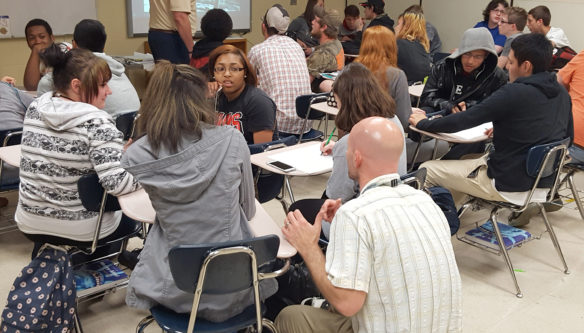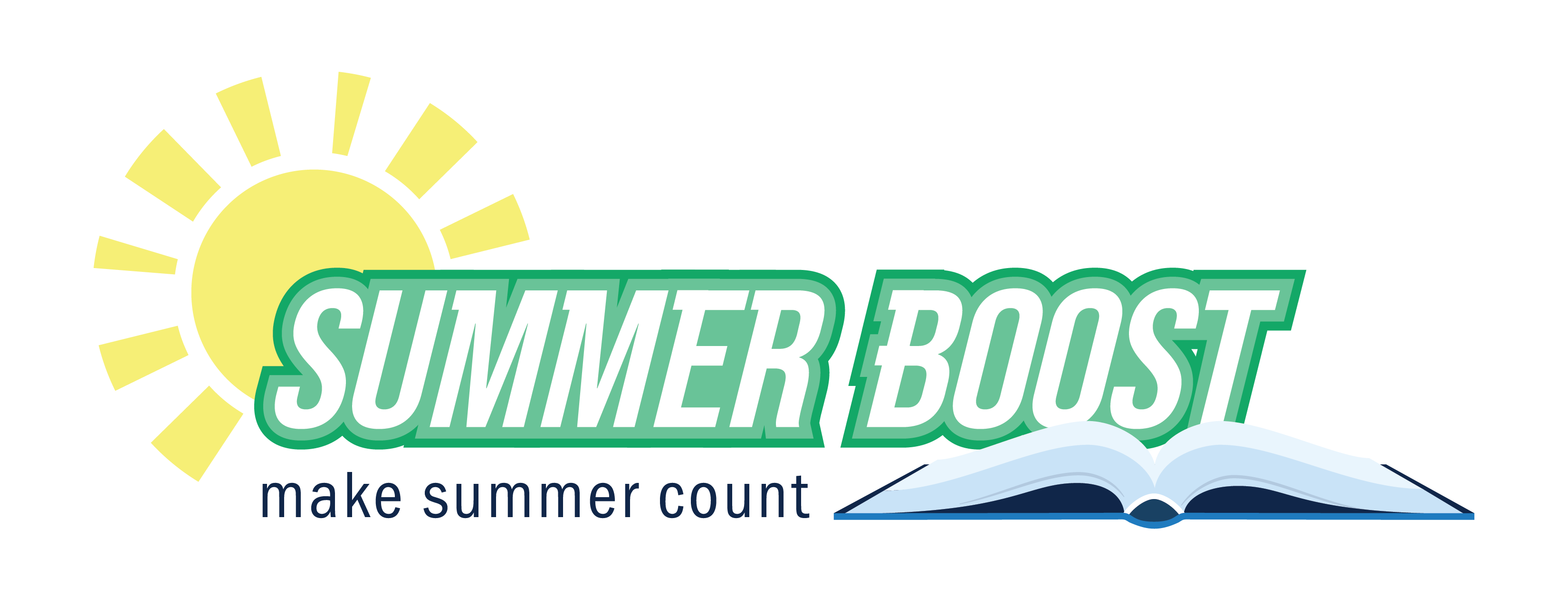
Students in Andrew Danner’s World Civics class at Shelby County High School work in teams to determine the best questions they generated from a historical image for later inquiry into the use of nuclear weapons at the end of World War II. All students in the district are taught how to annotate text to help them think more deeply about what they’re reading.
Photo submitted by Fox DeMoisey
By Veda Pendleton McClain
veda.mcclain@education.ky.gov
A student raised her hand in the midst of a 7th-grade science pilot assessment. As an observer, I quickly went to her to find out what she needed. “Is it okay if I annotate this text?” she asked. I was excited by her question and I responded, “Yes, of course.”
When the science teacher returned to the classroom, I asked, “Who teaches the students how to annotate the text?” She replied, “We all do.”
For the past five years, through a collaboration among Shelby County public schools, the Ohio Valley Education Cooperative (OVEC) and the Public Education Business Coalition of Denver, teachers in the OVEC region have been able to access professional learning on annotating.
Several years ago, teachers and administrators from Shelby County began participating in a four-day Thinking Strategies Institute offered by the Public Education Business Coalition. During the institute, teachers learn about annotation, which is a way of helping learners hold their thinking about text. “Hold their thinking” means students connect one thought to another, which increases their reading comprehension and their learning.
The institute focused on seven thinking strategies: activating schema, questioning, visualizing, inferring, synthesizing, determining importance and monitoring for meaning. A major part of the professional learning involves helping teacher participants become cognizant of how they come to understand what they read. Teachers also become actively engaged in annotating their own texts as part of the learning.
Students in all grades in Shelby County schools are taught to annotate.
“Annotating deepens their learning and helps students hold their thinking,” said Donna Siegel, an instructional coach in the district. “Reading is inhaling and writing is exhaling. Although students can sometimes fake their reading, they cannot fake their writing. Annotating helps teachers see where the gaps are in their learning.”
Siegel said early childhood students annotate in a variety of ways, including drawing pictures, writing on sticky notes, using reading journals and writing questions about the text. As students progress through the grades, they learn to use synthesis journals where they write about multiple texts, and learning logs where they write across content areas. Students also maintain journals in which they record their thinking, take notes and collect evidence from texts.
Essential to students learning how to annotate the text is teacher modeling.
Teachers participate in the initial annotating professional learning, where they learn how annotation improves the depth of their reading and extends their understanding of the text. Learning for teachers continues throughout the school year as the instructional coaches meet with them and plan lessons, observe the lessons and then meet again to reflect on the lessons.
New teachers in Shelby County participate in a two-day institute during the summer. Professional learning continues throughout the school year as teacher leaders offer opportunities on Tuesdays for colleagues to learn more about annotating.
Michael Dennis, middle school instructional coach, said teachers can identify the difficulties students are having with a text by looking at the questions that the students write. In this way, annotating can be used as a formative assessment.
Dennis said students have learned to annotate for different purposes depending on the task as well as the text. Although annotating was initially a matter of compliance, students have begun to see the value in using it as a tool to learn. Sometimes students are allowed to use their annotations during summative assessments, he said.
High school Instructional Coach Fox DeMoisey said annotating has immediate as well as long-term benefits for students.
“Students make their thinking visible to themselves and to their peers, and teachers can see where students need help,” DeMoisey said. “Teachers get to see their students’ minds at work.
“Annotating promotes individual processing. It is going beyond receiving and reciting. Annotating is text marking, and learners hold their thinking versus simply taking notes. It is writing to understand and to remember.”
Lora Shields, a staff developer for Shelby County schools, pointed out that a part of the district’s mission statement is to develop “wise” students, and annotating is a part of that development. Annotating provides a coping strategy for struggling learners and it helps both teachers and students see where they need help.
Shelby County schools’ district leadership intentionally model annotating in meetings. The thinking needed for annotating – like looking for evidence in text and writing questions about a text – helps students perform in all classes. Their focus for student learning is on thinking and problem solving as an end goal.
As for parental engagement in annotating, teachers and district leaders are still working on helping parents become more engaged in the process. The school’s language about annotating, however, has become common in the community. Parents are starting to talk about making inferences with their children as a common practice in their home literacies.
Using a writing to learn strategy such as annotating is helping Shelby County students think and problem solve in ways that will take them beyond their community. Annotating is a skill that will help them be successful on the road to a college or a career.




Leave A Comment